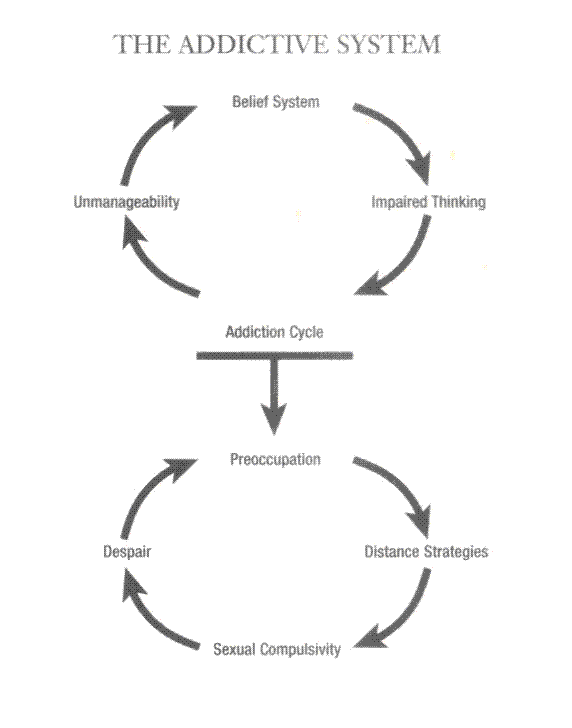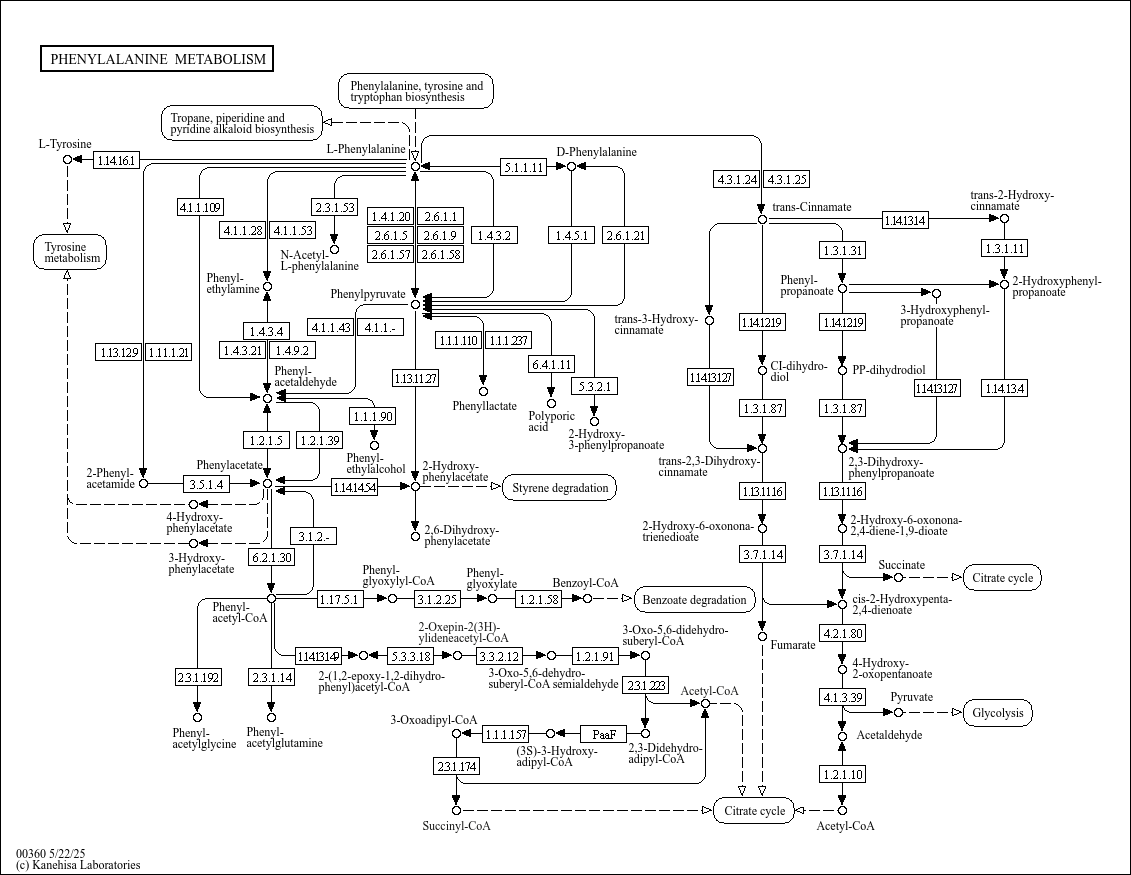DEFINITION


The sexual addiction is a disorder characterized by compulsive sexual thoughts and acts. Sex and the thought of sex tend to dominate the sex addict's thinking, making it difficult to work or engage in healthy personal relationships.
Sex addicts engage in distorted thinking, often rationalizing and justifying their behavior and blaming others for problems.
( Psych Central )
EPIDEMIOLOGY
At the moment no trusted data are avaible.
SYMPTOMS and DIAGNOSIS


Patrick Carnes proposed using as diagnostic criteria:
- Recurrent failure (pattern) to resist impulses to engage in acts of sex.
- Frequently engaging in those behaviors to a greater extent or over a longer period of time than intended.
- Persistent desire or unsuccessful efforts to stop, reduce, or control those behaviors.
- Inordinate amount of time spent in obtaining sex, being sexual, or recovering from sexual experience.
- Preoccupation with the behavior or preparatory activities.
- Frequently engaging in sexual behavior when expected to fulfill occupational, academic, domestic, or social obligations.
- Continuation of the behavior despite knowledge of having a persistent or recurrent social, academic, financial, psychological, or physical problem that is caused or exacerbated by the behavior.
- Need to increase the intensity, frequency, number, or risk of behaviors to achieve the desired effect, or diminished effect with continued behaviors at the same level of intensity, frequency, number, or risk.
- Giving up or limiting social, occupational, or recreational activities because of the behavior.
- Resorting to distress, anxiety, restlessness, or violence if unable to engage in the behavior at times relating to SRD (Sexual Rage Disorder).
Aviel Goodman proposed a maladaptive pattern of behavior, leading to clinically significant impairment or distress, as manifested by three (or more) of the following, occurring at any time in the same 12-month period:
- tolerance, as defined by either of the following:
- a need for markedly increased amount or intensity of the behavior to achieve the desired effect
- markedly diminished effect with continued involvement in the behavior at the same level or intensity
- withdrawal, as manifested by either of the following:
- characteristic psycho-physiological withdrawal syndrome of physiologically described changes and/or psychologically described changes upon discontinuation of the behavior
- the same (or a closely related) behavior is engaged in to relieve or avoid withdrawal symptoms
- the behavior is often engaged in over a longer period, in greater quantity, or at a higher intensity than was intended
- there is a persistent desire or unsuccessful efforts to cut down or control the behavior
- a great deal of time spent in activities necessary to prepare for the behavior, to engage in the behavior, or to recover from its effects
- important social, occupational, or recreational activities are given up or reduced because of the behavior
- the behavior continues despite knowledge of having a persistent or recurrent physical or psychological problem that is likely to have been caused or exacerbated by the behavior
Schneider identified three indicators of sexual addiction: compulsivity, continuation despite consequences, and obsession.
- Compulsivity: This is the loss of the ability to choose freely whether to stop or continue a behavior.
- Continuation despite consequences: When addicts take their addiction too far, it can cause negative effects in their lives. They may start withdrawing from family life to pursue sexual activity. This withdrawal may cause them to neglect their children or cause their partners to leave them. Addicts risk money, marriage, family and career in order to satisfy their sexual desires. Despite all of these consequences, they continue indulging in excessive sexual activity.
- Obsession: This is when people cannot help themselves from thinking a particular thought. Sex addicts spend whole days consumed by sexual thoughts. They develop elaborate fantasies, find new ways of obtaining sex and mentally revisit past experiences. Because their minds are so preoccupied by these thoughts, other areas of their lives that they could be thinking about are neglected.
( Wikipedia )
PATHOGENESIS

The sex addiction could be frequently associated to depression. There are three possible effects of a depressive state on the sexuality: inhibiting effect, pathological activation o physiological activation.
The pathological activation is associated to minor depression with an anxious component. In this case sexual activity is carried out like defensive mechanism: the frequency is increased and it seems to be compulsive (Treatment Centers , Healty Place). It seems a sexual “bulimia” workable to nurse depression. Suddenly the sex-related pleasure decreases and it’s replaced with anhedonia and loss of pleasure found in doing sex, but why?
Sex addiction could be compared to amphetamine addiction: at the beginning amphetamine causes the release of dopamine from the nucleus accumbens, the dopamine activates the reward system and therefore a sense of well- being. Amphetamine addiction however results from complex molecular changes in the brain following multiple exposures to substance. ( Wikipedia ) Dynorphins have been found to be an important part of this process.
Although a single exposure to amphetamine does not affect brain dynorphin levels, repeated exposures to the drug increases dynorphin concentrations in the striatum and substantia nigra in rats. One proposed molecular mechanism for increased dynorphin levels involves transcriptional regulation by CREB (3’, 5’-monophosphate response element binding protein). ( Regulation of Cocaine Reward by CREB, 1998 ) According to the model proposed by Carlezon et al., use of cocaine [then of amphetamine] increases the expression of cAMP and cAMP-dependent protein kinase. PKA leads to the activation of CREB, which increases the expression of dynorphin in the nucleus accumbens and dorsal striatum, brain areas important in addiction. ( Role of dynorphin and GABA in the inhibitory regulation of NMDA-induced dopamine release in striosome- and matrix-enriched areas of the rat striatum, 1994 )
Dynorphin decreases dopamine release by binding to KORs on dopamine nerve terminals, which leads to drug tolerance and withdrawal symptoms.
Carlezon et al. found that, when mice were injected with cocaine, they preferred to be in the place where they were injected (showed stronger place preference) significantly more than control mice (injected with saline) did. However, in mice overexpressing CREB under a constitutive promoter, place aversion was observed. This indicates that increasing CREB reverses the positive effects of cocaine. Dynorphin inhibits dopamine release, that would contrast the pleasurable effects of cocaine caused by the release of dopamine.
There is a cospicous variety of substances released during sex: dopamine, oxytocin, phenylethylamine, adrenaline, endorphins, serotonin, norepinephrine, nitric oxide (NO), pheromones and so on. (Neurochemiwstry of Sex )
The one that attracted my attention is phenylethylamine.
The phenylethylamine (PEA), also contained in chocolate and other food, can activate the reward system; its level spikes during orgasm and the explanation of sex addiction’s effect is hidden in biochemical structure of PEA: it is very similar to amphetamines. In fact phenylethylamine appears to be the natural ligand for the receptor stimulated by amphetamines, and is an effective antidepressant. 
( Biochem ) ( Department of chembio )
An other important effect of PEA is its influence on the dopamine release from nucleus accumbens. (Characterization of beta-phenylethylamine-induced monoamine release in rat nucleus accumbens: a microdialysis study, 1998 ; Comparative effects of amphetamine, phenylethylamine and related drugs on dopamine efflux, dopamine uptake and mazindol binding, 1988 )
The increase of dopamine can explain the sex-related pleasure but not the addiction.


PATIENT RISK FACTORS
- Abnormal levels of sex hormones (androgen) and chemicals in the brain (dopamine, NA, 5-HT)
- Neurological deseases: Parkinson’s desease, multiple sclerosis, dementia, epilepsy
- Childhood abuse (sexual, physical, mental)
- Emotional trauma
( Healt communities )
COMPLICATIONS
Complications of sexual addiction include sexually transmitted infections, death and relationship failure.
( Sexual Recovery Institute )
THERAPY
Treatment will focus on two main issues. The first is the logistical concerns of separating patient from harmful sexual behavior in the same way drug addicts need to be separated from drugs. This might require inpatient or residential treatment for several weeks.
The second and most difficult issue involves facing the guilt, shame and depression associated with this illness. Research suggests that antidepressants may be useful in treating sexual addiction.
( Sexual Recovery Institute , Psych Central )

